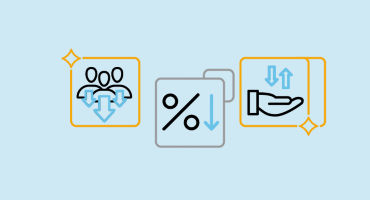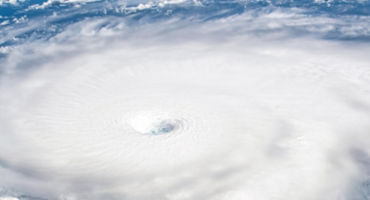As the tragic conflict between Russia and Ukraine continues to evolve, we believe the substantial reaction from commodities markets has been consistent with today’s tight supply environment and both countries’ significant roles in the production and trade of numerous commodities.
Specifically, Russia is one of the largest global exporters of energy (e.g., oil, gas, and coal) and metals (e.g., nickel, aluminum, palladium, and platinum). Additionally, together, Russia and Ukraine produce 19% of global corn exports and 28% of global wheat exports.1
Critically, the conflict exacerbates what were already very lean inventories across the universe of commodities, particularly for those most heavily tied to Russia and Ukraine. Further disruptions in supply can therefore be magnified in prices. In this piece, we explore how these trends impact the commodities asset class broadly and a few key commodities in particular.
The impact of Russia/Ukraine supply disruptions
The scale of actual disruptions to date is very hard to assess. Notably, end users appear to be swiftly moving away from Russian origin supplies, creating a strong bid for supply from other origins (e.g., US wheat). In contrast, while Ukraine is a significant corn producer, corn has not responded with the same strength as wheat. We believe this could signal the commodity market places greater emphasis on end users rerouting away from Russia than on potential infrastructure and logistical disruptions in Ukraine. Globally, the current unrest could have several secondary and tertiary effects, in our view:
- South America is in the best position to make up for lost agriculture supplies from Russia and Ukraine. That said, its short-term ability to respond will be limited by a crop that has been severely downsized by drought.
- China carries some of the largest inventories and strategic reserves across grains and commodities more broadly, leaving it relatively well positioned.
- These supply disruptions could also create civil unrest in other regions, as many countries across the Middle East and Asia can be particularly sensitive to food inflation.
While few commodities are “cheap” when we consider current prices relative to their marginal costs, today’s valuations are arguably justified by critically low inventories and the need to force demand destruction. Further, we believe these events will continue to drive a repricing of cost curves. Notably, inputs are becoming more expensive (e.g., rising oil costs increase the cost of steel production, which in turn increases the cost of producing oil). Moreover, Russia’s low-cost production will be challenging to access in the short term and potentially structurally impaired longer term. This means a world that has to find substitutes and new supply, which takes time and is generally higher cost.
Importantly, though aggregate commodity inventories are currently the tightest they have been in at least three decades, producers continue to demonstrate capital discipline.
Oil supply likely to stay low
For instance, within energy, US shale and OPEC producers remain disciplined. This is in stark contrast to how the industry behaved for much of the 2010s. Each party appears to understand that it is in their respective best interest to be disciplined and transparent about their intentions. Through our discussions with management teams, US exploration and production companies (E&Ps) are largely sticking to their very minimal growth plans, while also experiencing real and limiting constraints in labor, pressure pumping, and other inputs.
Our conversation earlier this week with His Excellency Mohammad Sanusi Barkindo, OPEC’s Secretary General, highlighted that OPEC is currently irresponsive and waiting for more “clarity” on impacted production/exports. The group next meets on 31 March 2022 with no present intentions to hold an emergency meeting before that date. OPEC spare capacity is believed to be just around three million barrels per day (mbpd) and only four countries (Saudi Arabia, Iraq, Kuwait, UAE) hold spare capacity, making it challenging to meet the previously announced 400,000 bpd/month increase agreed upon by OPEC+ (which includes OPEC countries and Russia). Saudi Arabia has also stated that it would not exploit a situation that is adversely affecting another member of the group. Therefore, while the US has tried to apply pressure to OPEC through non-Saudi members with spare capacity (e.g., UAE, Iraq, and a little in Kuwait), we still haven’t seen any announcements of an “emergency meeting.”
Tight metals supply
Across the metals, the largest miners are only now reengaging with the idea of raising exploration spend. This change would enable the miners to grow production for the 2030s but wouldn’t address the immediate supply tightness. The downstream effect of high European power prices is also forcing zinc and aluminum smelting capacity in Europe to shut down, which is further straining the current deficits.
Where we see commodities opportunities
Amid the backdrop of the market’s existing supply conditions and the Russia/Ukraine conflict, we believe several commodities look compelling on a relative and absolute basis.
- Oil may be cheap, especially relative to other energy molecules — The dollar equivalent of European gas and coal is >US$400/barrel. This continues to encourage substitution from gas into oil through the distillates. In other words, there currently is no demand destruction in oil.
- Corn appears attractive — Due to the timing, we believe it will be very challenging for Ukraine to plant a normal corn crop, which leaves South America and the US in a position to fill the supply gap. Clarity on these crops will come later this summer, so we believe the market is likely to maintain a risk premium for corn throughout the next few quarters.
- Metals continue to appear compelling — Platinum is currently trading just around marginal cost and is also a very strong potential substitute for palladium, which is higher priced and highly dependent on Russian production. From a base metal perspective, aluminum supply is further constrained in light of European shutdowns, while demand for non-Russian nickel production is tightening supply across that commodity.
Bottom line on commodities investing during the Russia/Ukraine conflict
Today’s prices may look high by historical measures, but they continue to be supported by fundamentals. It is helpful to remember that this is the type of event that can create price extremes and may very well necessitate the type of demand rationing of many commodities that we have not experienced in decades.
These ongoing events will continue to impact supply chains, inventory management, and sourcing. These trends will also potentially accelerate deglobalization, hoarding of commodities, and onshoring. Crucially, we believe all of these actions are very inefficient, highly inflationary, and broadly supportive of the commodities asset class.














